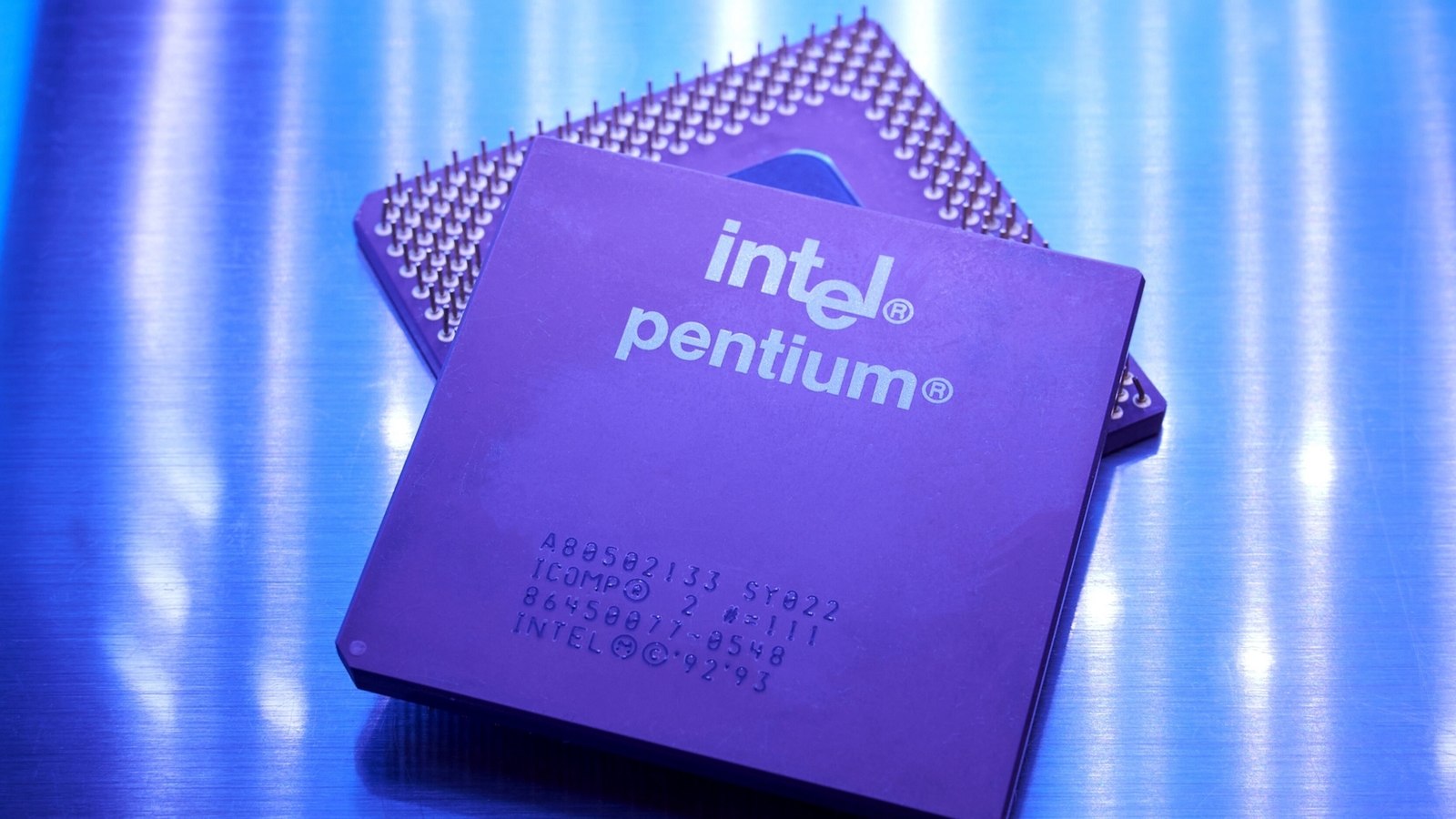Linux developers want to remove i486 and i586 Pentium CPU support to unburden kernel developers
The i486 series launched in 1989, and the i586 series debuted in 1993.

Linux is renowned for supporting incredibly ancient hardware, but there are limits to even what Linux developers can support. Phoronix reports that Linux developers are finally proposing removing support for ancient i486 and early i586 (Pentium) CPUs to unburden developers.
Linux kernel developer Ingo Molnar proposed in an RFC patch thread to remove support for these ancient 32-bit processors due to the few people running these chips combined with the latest Linux kernels. Compatibility has allegedly reached a point where supporting these chips is causing more headaches in the codebase than it's worth.
Molnar also stated that Linus Torvalds has similar feelings and desires to "...leave i486 support behind." Specifically, ending i486 and early Pentium support will allegedly remove 14,104 lines of code inside 80 files in the Linux kernel. Removing support would bump up the minimum kernel support level to include TSC and CX8 hardware support.
Linux developers have considered removing i486 support as far back as 2022, but there now appears to be mounting pressure to execute those wishes. For reference, Linux dropped support for the i386 series in 2012, marking 13 years since the last time the Linux kernel discontinued support for a deprecated CPU series.
The i486 series is an ancient Intel CPU lineup that launched back in 1989, representing Intel's fourth generation of binary-compatible CPUs. The i486 introduced several key technologies, such as a large on-chip cache and an integrated floating-point unit, components that are used in almost every single modern CPU. Depending on the model, i486 chips took advantage of 1000nm down to 600nm process nodes, with clock speeds ranging from around 20 MHz to 100 MHz. Production of the last i486 chips was discontinued in 2007.
The i586 series, also known as Intel's first Pentium-branded processor lineup, succeeded the i486 series. The original Pentium, introduced in 1993, brought along improvements from the i486 series, including a dual-integer pipeline design and a more advanced floating-point unit. The first-generation Pentium (or P5) was built on an 800nm process with clock speeds ranging from 60 MHz to 66 MHz, depending on the model.
Follow Tom's Hardware on Google News to get our up-to-date news, analysis, and reviews in your feeds. Make sure to click the Follow button.
Get Tom's Hardware's best news and in-depth reviews, straight to your inbox.

Aaron Klotz is a contributing writer for Tom’s Hardware, covering news related to computer hardware such as CPUs, and graphics cards.
-
Grobe ReplyProduction of the last i486 chips was discontinued in 2007.
That long? It had to be a marked for this somewhere for the production going on for that long time. -
Alvar "Miles" Udell ReplyGrobe said:That long? It had to be a marked for this somewhere for the production going on for that long time.
Embedded systems. -
LabRat 891 Reply
Only issue my tiny PoV can think of, would be the ancient infrastructure still in place (esp. outside of US).Alvar Miles Udell said:Embedded systems.
AFAIK, there are still a lot of industrial control systems using various forms of i486 and Pentium.
That said, they might already be 'frozen in time' on the software-side.
I'll be truly concerned when talks of dropping i686 support, start becoming more-common. -
abufrejoval I still have a few of those in one of my "silicon jewelry boxes". But that's only because they were small enough for quite a few to fit into such a small box and to compensate that I game my 80286 and 80386 chips away with the computers they ran in.Reply
Today I wish I still had one of each variant I ran throughout my four decades of PC ownership and IT career.
After going 32-bit with a few 80386, my first i486-33 ran Unix System V Release 3 from Interactive Systems and got replaced by an Intel DX2 and then an AMD DX4 variant, which had me stick with AMD for many iterations, basically until Intel got its game straight with the Q6600.
Somehow all those AMD 586 to K6-III+ 500 chips still blur into "80486" for me, I still have some of those CPUs, nothing to run them on.
For the OS I went from Unix to BSD and Solaris and don't really remember why or when I finally converted to Linux, most likely it was because of Xen: secretly I've always adored the VM/370 abstraction, while I hated the IBM mainframe almost as much as Microsoft, commerce over engineering was the underlying issue.
I drew the line at 64-bit and VM support a long time ago, the oldest hardware in storage still theoretically capable of running would an ancient Merom notebook and a Core2 board currently holding a modified Harpertown Xeon running cool at 3.4 GHz. But my original Kentsfield Q6600 is still in that CPU box and should run Windows 11 up to 23H2.
I've relived some of those "golden old times" via PCem a few years ago and that experience reminded me of all those endless hours spent on making those ancient PCs work with their different busses (XT/AT/MC/EISA/VESA-LB/PCI/PCI-X/PCIe) and how you had to configure all those add-on cards and BIOS options... some things actually did get better with the years!
I don't know if some aircraft carrier is kept alive only by a 80486 based system on Linux, I seem to remember that Space Shuttles needed 8086 CPUs at one point. But for software archaeology, emulation seems good enough for me, I don't spend much time with my Apple ]that hardware.
I also got Hercules to boot a z/Arch image of SuSE once, but finally being able to run an IBM mainframe on my PC didn't give me the kick I had come to expect ever since I nabbed one of those IBM metal stickers from one of them and put it on my first PC-AT clone in 1986. -
abufrejoval Reply
Didn't Sandy Bridge chipsets still include a 80486 running Minix as a control processor?Alvar Miles Udell said:Embedded systems. -
mlindefar Ahem, my dx4 ran 133 MHz so the 20-100mhz span is offReply
(And i newer heard of a 486 slower than 25, but maybe embedded)
... And it clocked at 166, and ran circles around the first pentium -
kluge Reply
I've got a 486sx 16/20mhz machine in my collection here. It always was used at 20mhz, unless you had some "old" software (games) that ran too fast, then you'd hit the Turbo button and it dropped to 16.mlindefar said:Ahem, my dx4 ran 133 MHz so the 20-100mhz span is off
(And i newer heard of a 486 slower than 25, but maybe embedded)
... And it clocked at 166, and ran circles around the first pentium
I *think* I have a 20/25mhz box around here somewheres too... -
abufrejoval Reply
The DX4 was actually a x3 clock multiplier from the external 33 MHz, which means 100MHz.mlindefar said:Ahem, my dx4 ran 133 MHz so the 20-100mhz span is off
(And i newer heard of a 486 slower than 25, but maybe embedded)
... And it clocked at 166, and ran circles around the first pentium
Only AMD had DX4 which were actually x4 clock multiples of the 33 MHz input clock and thus ran at 133 MHz.
Not so sure a 166 MHz 486 would have always beat even an early Pentium: a 64-bit data bus, a much better floating point implementation and most importantly, a non-native x86 ISA implementation and RISCy translation layer went a long architectural way towards beating faster clocks.
I went with a 83 MHz Pentium Overdrive for a short while, which offered the worst of both worlds, but a smoother upward transition if you had already bought an Overdrive ready mainboard.
I remember that first overdrive mostly for the fact that it included a tiny little fan, a moving part, that could obviously fail! Up to that point all CPUs were passive cooled.
But Intel offered life-time warranty replacement for those fans, which I'd like to claim today.... but that CPU is long gone. -
willpage Reply
Pentium MMX probablyvern72 said:What would be the minimum supported CPU after that? Pentium Pro?